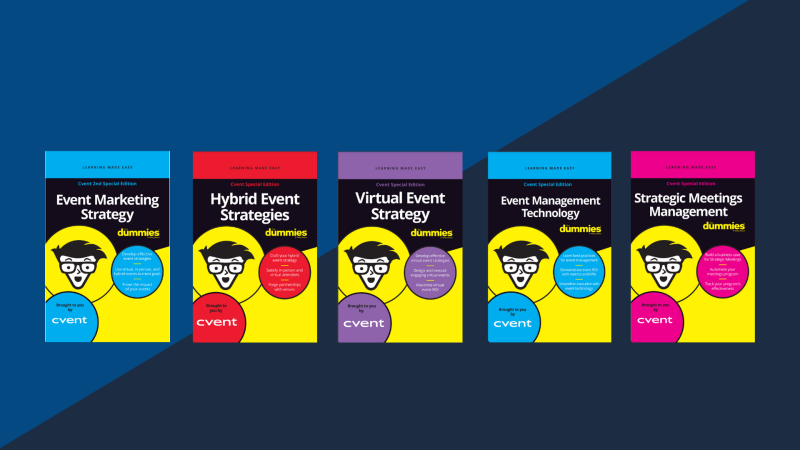Faced with an urgent need and few choices, many organisations took their in-person events virtual because they saw it as the only option. Though virtual events are not new, the rush to make a complex in-person event virtual came rife with issues, as planners experimented with virtual event strategy and execution, learning and growing with each new experience. The past year has seen great innovation as organisations of all kinds feel their way into the possibilities, and limitations, of virtual events. Now, with more options than ever and an eye on the long-term effects of our new normal, virtual events can get the attention they deserve.
Executing the logistical and technical elements of virtual events often requires skills and inter-team discipline that may not have been needed for an in-person event. And, while many execution elements of virtual events are the same as in-person (think promotion and registration), creating and capturing attendee engagement in a virtual setting often requires rethinking your programming and your technology. There are two parts to planning virtual events: strategy and execution. While Virtual Event Strategy and Execution: A Practitioner’s Guide will cover the following points in detail, we’ve picked out some highlights to get you started.
How to develop a virtual event strategy
How do you decide which events can be taken virtual? Perhaps more importantly, what aspects of those events can be taken virtual? This requires a thoughtful evaluation of the event’s purpose and goals.
Start with the why
What was the original purpose of the event? Going virtual means stripping your event to the studs and building anew. Virtual and in-person events, while very similar in execution, need to be thought of differently when it comes to strategy.
What were the KPIs or Goals of the Event? Can your original goals be met virtually?
As you breakdown the event, aligning to old or new goals will give your event a clear purpose. We’ve outlined a few common goals for you in the eBook.
Don’t be afraid to experiment
Take chances! While this type of event is new and changing, go out on a limb, entertain big ideas, and try something new.
Explore different virtual event options
Just because you were planning to host a traditional conference, doesn’t mean that you should now. The various virtual event types, from conferences to webinars to networking look a bit different than their in-person counterparts. Check out our event type chart in the eBook for more details.
Breakdown your budget
You can’t plan an event without a budget. Your budget may have grown smaller or you may have a little wiggle room now that some of the costs of in-person events have gone away. Assess your situation before you begin planning your virtual event. While there are some items you won’t need, like F&B, a quality virtual event requires the right tech, which may eat up more of your budget.
Planners and marketers unite
It’s time for planners and marketers to learn from each other. Marketers already have a warehouse of virtual event tech, while planners have the skills to think through any problem that could arise during an event. To host a successful virtual event, marketers and planners will have to lean on each other.
Proving ROI and event success
All in all, the switch to virtual is a way to engage attendees across a new medium, but the basic elements are the same. With more tech being implemented, there is more data than ever to track attendee engagement and event success. By utilising the same systems, planners can compare success across events of all types, whether in-person, virtual, or hybrid.
How to execute virtual events
Start with a clear view of the experience you want to deliver. A broad, integrated view is essential here, one that utilises attendee data from both virtual and past events to get the full picture of attendee interest.
Bring the right mindset and skillset
Virtual events require a fresh look, creativity, and a willingness to adapt. Though, who hasn’t gotten good at adapting lately? Virtual events are not in-person events and never will be. That’s the simple truth. So, when planning, don’t try to recreate an old event. Attendees consume content differently online. Embrace that and allow yourself to think outside the box. With that mindset, be willing to take on new technology. This an age of digital transformation, the more you learn, the better your event will be.
Pre-event execution doesn’t look much different
Don’t worry – it’s not all different! Much of the early stages of event execution, regardless of event type, is still the same.
Virtual event engagement
Attendee engagement is built on four key elements.
- The content experience: When virtual, content IS the experience, so it needs to shine.
- Networking and building connections: Attendees still need to connect – and there are more ways than ever to connect virtually with the help of tech.
- The sponsorship experience: Give sponsors room to shine in virtual environments.
- Data and analytics: With the right data from live polling, session attendance, and more, you can be deliberate about maximising your event value.
The virtual tech landscape
What’s the difference between video streaming, video conferencing, webinars, and virtual conferencing? The event technology you need is dependent on the kinds of virtual events you’ll be hosting. To pick the right kinds of tech, you need to first understand what’s available and what will fit your needs.
How to choose the right virtual event strategy and execution
Take your virtual experiences to the next level with clear goals, the right tech, and better engagement. For a breakdown of the virtual tech landscape and more on about strategising and executing virtual events, check out the source: Virtual Events Strategy and Execution: A Practitioner’s Guide.





